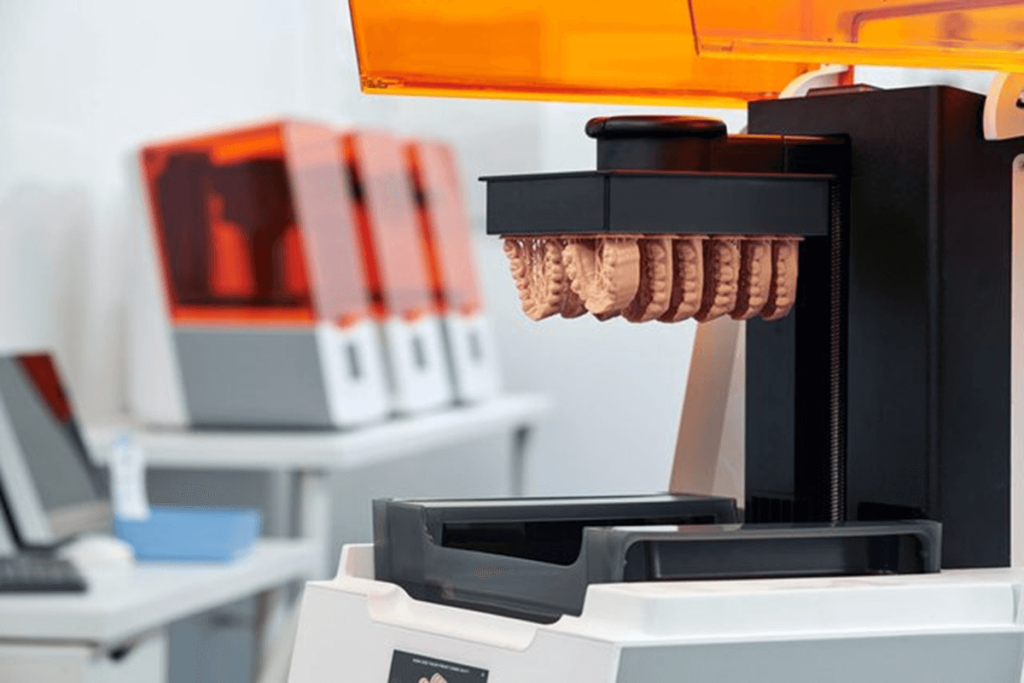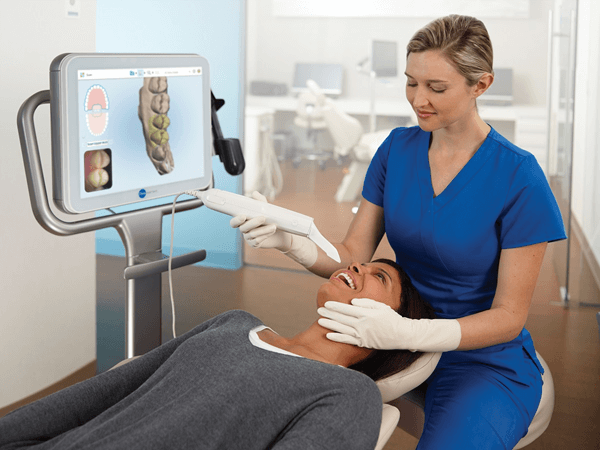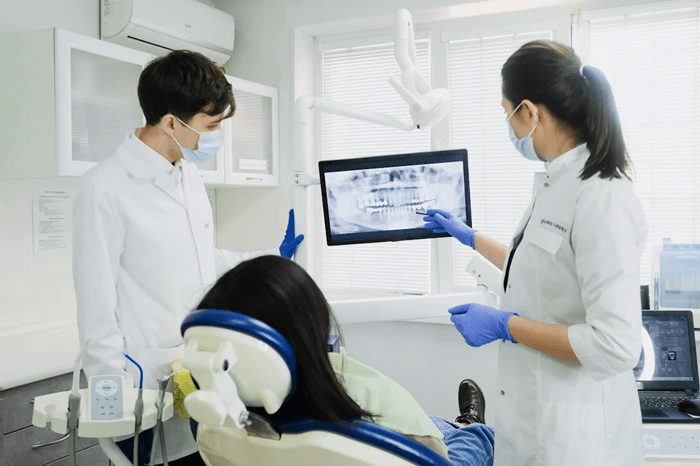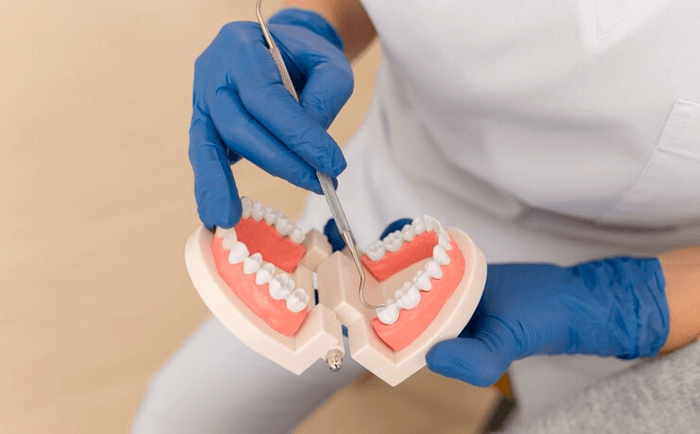Dental practitioners use dental 3D printers to fabricate customized molds, crowns, bridges, dentures, and even surgical guides. 3D printing also eliminates the need for outsourcing lab work and becomes cost-effective.
However, there are some pesky challenges linked to 3D printers. One of the major challenges that many practitioners face is the high costs of quality printers and materials. Also, the learning mode of operation and comprehending software systems can also be complex.
This guide offers you a complete guide on how to use 3D printers in dentistry and offers a clear and concise guide to ensure that dental practitioners can effectively use this tool.

- How to Use a 3D Printer in Dentistry? A Step-by-Step Guide
- What is a Dental 3D Printer Used for in Dentistry?
- What are the Benefits of Dental 3D Printers?
- Challenges and Limitations of 3D Printing in Dentistry
- Why Is Aidite’s CPD-100 Dental 3D Printer a Top Choice for Dental Labs?
- FAQs about Dental 3D Printers
How to Use a 3D Printer in Dentistry? A Step-by-Step Guide
The following are the specific details of the uses of dental 3D printers and how to ensure that implementation is seamless to enhance patient care.
Step 1: Digital Scanning

In this step, dental 3D printers are used to take an accurate impression the patient’s teeth or mouth by using digital scanner. This scanner scans the images of patient teeth and then produces various 3D models such as dentures, implants, and bridges. A digital scanner gives accurate data and computation in contrast to the conventional models.
Step 2: Design the Dental Model

Once the impression is captured, the next step is to design the dental model with the help of CAD (computer-aided design) software. With this software, the dental professional makes adjustments to the shape, size, and structure of the models. The design process is highly customizable, allowing for personalized models for each patient.
Step 3: Preparing the File
The next process that follows the designing of the model is the preparation of the file for printing. The CAD design is then exported to STL format which is a file format. The file is then moved to the dental 3D printers and the printing process starts.
Once the above design of the model is done, the next step is to arrange the file for printing. The CAD design is then exported to a digital STL format that is used in the process. The file is then taken to the 3D dental printer and from there the process of printing the 3D model commences.
Step 4: 3D Printing Dental

Once the file is ready, the dental 3D printer starts the process of creating the dental models you want. The whole process can take a few minutes to hours depending on the size, shape and complexity of the restoration.
The printer employs plastic, metal, or resin to make an item that is accurate to the design and is made to order. While printing, it is necessary to watch the printer to check whether the printer is advancing the design accurately or not. When the 3D printing for dental is done, the object will be in its raw form of the material that has been used.
Step 5: Post-Processing and Fitting

When your 3D printing process is done, the model needs post-processing. It includes cleaning the printed object to remove any excess material and curing it under UV light to ensure it hardens fully. The dentist will then first adjust the model and polish the finish to achieve a smooth or neutral-looking surface. Now the restoration is ready for placement.
Step 6: Fitting and Final Adjustments
The final step is to insert the 3D-printing dental product into the patient’s mouth. The dentist makes some necessary adjustments to ensure the comfort and functionality of the 3D model. If the product is a crown, bridge, or implant, the dentist will bond it to the patient’s teeth or oral area in the appropriate location in the mouth.
What is a Dental 3D Printer Used for in Dentistry?
From making surgical guides to bridges, dental 3D printers have diverse applications in the dental field.
- Creating Dental Implants
Dentists can create high-quality and well-designed implants that fit properly in the patient’s mouth with the help of 3D printers for dentistry. These printers help to create customized designs by scanning the model digitally.
- Crowns and Bridges
3D printing for dentistry can make crowns that fit perfectly. This is like putting a hat on a tooth so it feels better and works well. Dentists use 3D printers to make these crowns quickly, so patients don’t have to wait long.
- Surgical Guides
One of the greatest uses of 3D printing dental industry is to make surgical guides. The guide is designed to help dentists perform complex procedures like implant placement with greater precision.
- Prosthetics and Dentures
Dentists can create prosthetics and dentures by using this 3D printer for dental labs. With the help of a 3D printer, you can create dentures that are custom-based to fit properly to the patient’s gum line.

- Models for Education and Training
Dental 3D printers are also used in many healthcare departments to make models for educational and training purposes for medical students. The dental educational sector and training center use 3D printed models to create teeth, jaws, and other structures to teach dental students about anatomy.
- Bioprinting and Research
Medical researcher specialists also work with 3D printers to create teeth parts and dental tissues. They use this advanced technology and instrument to create something new or extraordinary in the dental field.
What are the Benefits of Dental 3D Printers?
3D printing dental is a valuable tool for dental professionals due to its wide range of benefits. One of the main advantages is accuracy and precision. 3D printers can create highly precise and well-structured dental models and restorations such as crowns, bridges, dentures, and implants.
This attention to dental accuracy ensures that every model fits perfectly and is more comfortable for patients.
The speed of dental 3D printers is another great feature that saves you a lot of time and provides you with quality time to spend on patient healthcare. The design of the printer helps the dentist create a custom fit restoration that aligns more precisely. By the digital scans feature, the dental labs using 3D printers allow you to set the size and shape of the model before printing it out.
Challenges and Limitations of 3D Printing in Dentistry
Despite the advantages of dental lab 3D printers, it also comes with some limitations and challenges that can be a headache for dental professionals. The cost of equipment and materials for this printer is the main one. The materials used in this printer, especially resins, are costly, which makes it difficult for small dental practices to adopt them.
Another great challenge is learning how to use and set it. To operate this 3D printing dental, dentists need specialized training from a well-known center. Without proper training, the risk of error in the printing designs increases, which affects the quality of treatment.
The speed of this print can also be a limitation. Furthermore, the quality regarding the safety and certification of the 3D printing dental industry also creates hurdles for dentists to adopt this technology.
Why Is Aidite’s CPD-100 Dental 3D Printer a Top Choice for Dental Labs?
Equipped with advanced technology and features, the Aidite CPD-100 DLP 3D Printer is a valuable addition for dental labs. The Digital Light Processing (DLP) technology of these dental 3D printers enables dentists to take detailed prints.
Due to exceptional precision, this 3D printer for dentistry produces restoration with fine details and is ideal for creating crowns, bridges, and surgical guides.
The fast print feature of this printer improves workflow efficiency in dental labs. With the compatibility of a wide range of dental resins, you can choose the material for specific needs. Whatever the dentist creates—crowns, dentures, or aligners—the CPD-100 Dental 3D Printer is an excellent choice.
Aidite also offers other products like furnaces, dental equipment, and Aizir Multilayer Zirconia Disc that help make strong and natural-looking teeth and crowns.
FAQs about Dental 3D Printers
- What is the cost of a 3D-printed dental crown?
The 3D-printed dental crown cost typically ranges from $300 to $1200. However, it depends on factors like location, material quality, and dental practices. 3D printing technology can reduce the labor cost. However, the final price may vary based on customization and additional procedures needed.
- How long does it take to 3D print a tooth?
3D printing a dental crown takes generally between 17 minutes and a few hours. It depends on the complexity and the type of material used in the printer. For printing, additional time is required for final touches like curing, polishing, and filling. This process also takes another 1 to 2 hours. However, the total treatment time varies.
- How long does it take to print a dental crown or aligner?
3D printing a dental crown usually takes 20 minutes. The printing of dental aligners can take around 1 to 2 hours per tray. Additional time is also needed for port processing, such as curing and polishing. The overall process, including fitting and adjustment, may take a few days.
Conclusion
To sum up, dental labs using dental 3D printers offer faster, more accurate, and more precise solutions for dental restoration. This technology not only reduces the time of procedure but also improves overall the procedures of dental work. The use of 3D printing dental industry allows for highly detailed models that lead to more comfortable dental devices.
The Aidite CPD-100 DLP 3D Printer speeds up the dental process by creating accurate crowns, bridges, and aligners quickly. With the ability to handle a wide range of material compatibility, the Aidite CPD-100 is a versatile choice for dental professionals.



